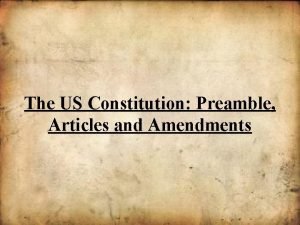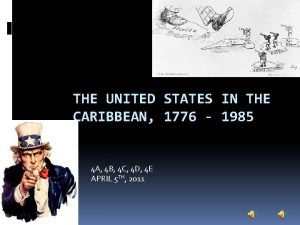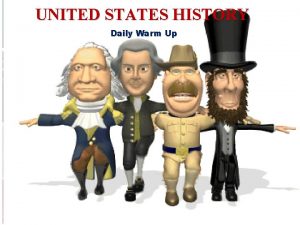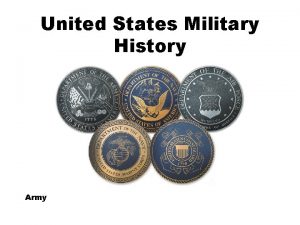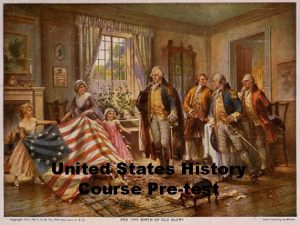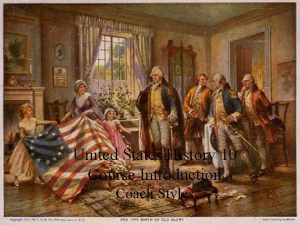UNITED STATES HISTORY INTRODUCTION MR TORRES UNITED STATES









- Slides: 9

UNITED STATES HISTORY: INTRODUCTION MR. TORRES UNITED STATES HISTORY 8 TH GRADE

What is Geography and why do we need it? Geography is the study of the Earth and its people. A geographer tries to understand a place—not just where it is, but what it is like, what takes place there, and how the people there live. Historians study geography to show connections between people and places. Because geography affects history. The location of rivers and mountains, the climate of an area, the types of plants found at a place, where resources are, and other geographic issues determine when people go to a place, develop something, or make something happen.

Think of this… What would happen if you were an American general during the Revolutionary war in pursuit of the enemy? You don’t know where they are and the only tool at your disposal is a map that you don’t know how to use.

The Five Themes of Geography • Location describes where something is. Absolute location describes a place's exact position on the Earth's surface. Relative location expresses where a place is compared to another place. • Place explores the physical and human features that make a city, state, or country unique. • Regions areas that share common features. A region may be land, water, or a specific area in a city or state. • Movement explains how and why people, things, and ideas move • Human-environment interaction explores the relationship between people and their environments.

Geography Tools Globe – round model of the Earth Map – flat drawing of all or part of the Earth’s surface. Types of Maps Physical maps – show elevation, landforms, relief Political maps - show the names and political boundary lines, or borders, of a place. may also show human-made features, such as cities or transportation routes. Special Purpose/Thematic maps - Some maps present specific kinds of information. These are called thematic or special purpose maps. They usually show themes or patterns, or emphasize one subject.

Components of a Map 1. Data Frame: The Portion of the map that displays the Data. 2. Legend: Serves as a decoder for what is being shown in the Data. 3. Title: Description of the subject matter of the map. 4. North Arrow: Allows the view to know the orientation of the Map. 5. Scale: Explains the relationship of the data extent to the real world.

Examples: Physical Map

Examples: Political Map

Activity Time…
 United states history and government regents
United states history and government regents Was the united states on the axis powers or allied powers?
Was the united states on the axis powers or allied powers? Many _____ people have settled in this megalopolis.
Many _____ people have settled in this megalopolis. 36 30 line
36 30 line National premier soccer league
National premier soccer league Marshall case
Marshall case United states student association
United states student association The united states ought to provide a universal basic income
The united states ought to provide a universal basic income Preamble to the united states constitution
Preamble to the united states constitution The united states in the caribbean 1776-1985
The united states in the caribbean 1776-1985








